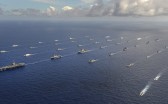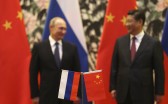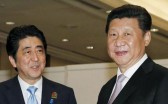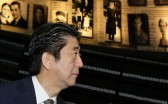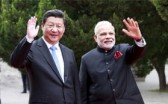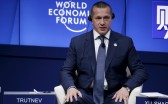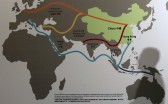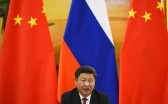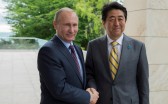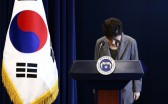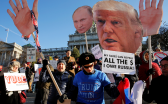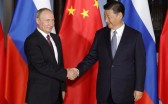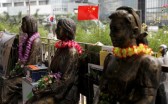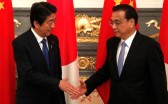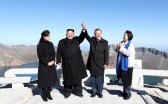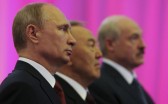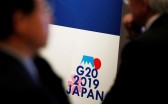By outlining the nuances propelling India’s diplomatic and military engagements in recent weeks, this article argues that each nation in the India-US-Japan trilateral design is guided by its own individual national interest and that India’s attitude toward geopolitical realities is shaped by a balance between engagement and autonomy. This piece, as the first one, analyzes developments in the bilateral and trilateral landscape and then situates them in the larger regional and global context to grasp this triangle’s prospects and limitations. India, among several other initiatives, has invested in adding value to its partnerships with both the United States and Japan by way of its summit meeting in Washington, the routine India-Japan Defense Ministerial Meeting in New Delhi, and the annual Malabar exercises involving the Indian and US navies, and the Japanese Maritime Self-Defense Force (JMSDF). Following the India-Japan Defense Ministerial Meeting, reports in the media indicated that even though there were expectations to finalize the US-2 amphibious aircraft deal during Defense Minister General Nakatani’s visit, India is reanalyzing a few issues including pricing and utility.1
A closer reading of the developments during the Washington summit in June is in order. The India-US joint statement argues that they are “priority partners in the Asia-Pacific and the Indian Ocean region.”2 Building on their strategic partnership, they bolstered bilateral defense cooperation. However, Prime Minister Modi, speaking to a Joint Session of Congress pragmatically underscored the value of autonomy in decision making and acknowledged that “as we deepen our partnership, there would be times when we would have differing perspectives.”3 Though India was identified as a major defense partner with whom the US will be engaging in technology transfer, the US Senate failed to recognize India as Washington’s “global strategic and defense partner,” because an important amendment required to adjust US export control regulations was not passed.4 Moreover, the bilateral economic equation still has to resolve the complications of the Totalization Agreement and Bilateral Investment Treaty. Further, with TPP, India has been shut out from the Asia-Pacific. Additionally, both countries reportedly had dissimilar interpretations regarding the implementation of the Paris Agreement.5
One salient aspect in the June 2016 India-US joint statement is that even though it reiterated the importance of freedom of navigation and overflight, it omits mention of the South China Sea, which was featured in the previous statements, including in September 2014 and the 2015 “US-India Joint Strategic Vision for the Asia-Pacific and Indian Ocean Region.” This, some would argue, is because of India’s stake at the Nuclear Suppliers’ Group (NSG) Plenary later in June. Moreover, contrary to some reports that India will be conducting joint patrols with the United States in the South China Sea, Indian Defence Minister Manohar Parrikar has categorically argued in the Rajya Sabha (Council of States, the Upper House of the Parliament) that India has not engaged in any talks with the United States on joint naval patrols.6 It is important to note that the 2015 Indian Maritime Security Strategy identifies the South and East China Sea, Western Pacific, and their littoral countries as Indian Navy’s “secondary areas of maritime interests.”7 The broader debate on “freedom of navigation” indicates that a school of thought in India posits that it actually implies safeguarding US supremacy in the region and that it is “naïve” to expect that the United States is devoted to building a multipolar Asia.8
Following the South China Sea decision, India, as a responsible member of the international community and a state party to UNCLOS, has “noted” the verdict and called upon “all parties to show utmost respect for the UNCLOS.”9 It is interesting to note that at a time when ASEAN failed to build a consensus during the 49th ASEAN Foreign Ministers’ Meeting in Vientiane, and mixed signals are emerging from the Rodrigo Duterte administration, US allies are getting increasingly involved in the power contest between the established power and the rising challenger in the Asia-Pacific.
At the Shangri-La Dialogue, Parrikar, drawing from Modi’s vision, underscored that India’s approach to the Indo-Pacific region is guided by the spirit of “security and growth for all in the region.” He articulated the importance of “nurturing frameworks to manage security issues, [and] build mutual trust and confidence to avoid conflict.”10 It was emphasized that India has instituted maritime security dialogues, aimed at exchanging security perceptions and exploring potential areas for cooperation, with several regional stakeholders including Australia, China, France, the United States, and Japan.
Noting the critical importance of situating this trilateral design in the larger regional and global context, consider other important developments during the same timeframe. As India strengthened its relations with the United States during Modi’s visit in June, India also joined the SCO as a full member in the same month. India will host the eighth BRICS summit in October. In the run-up to the NSG Plenary session in Seoul in June, India intensified its diplomatic campaign with China since India realizes that for it to become a part of the NSG, China’s support, in addition to that of the United States, is crucial. Not only did Foreign Secretary Subrahmanyam Jaishankar visit Beijing, but India also engaged with China at the highest level during the Modi-Xi meeting in Tashkent on the sidelines of the two-day SCO summit that coincided with the meeting of the NSG in June. As the plenary session ended without making a decision on India’s application, New Delhi will continue to work towards its goal of seeking NSG membership in order to safeguard future Indian interests in nuclear commerce.
At the same time, India’s Finance Minister Arun Jaitley attended the first annual general meeting of the AIIB in Beijing as the second largest shareholder, where he extended New Delhi’s support in establishing a regional office.11 This timeframe also witnessed the 20th edition of the annual Malabar exercises—one among many joint exercises that India conducts with friendly countries–and saw China join the US-hosted Rim of the Pacific (RIMPAC) 2016 joint exercises for the second time. Furthermore, just as Modi and President Obama were meeting, the US-China Strategic and Economic Dialogue was underway in Beijing where Secretary John Kerry stated that “the US-China relationship is absolutely vital, that it may well be the most consequential bilateral relationship of nations.”12
These various events reflect that India, as every other nation, is guided by its national interests. India seeks a balance of interest in the region as it does not believe in zero-sum games. Where there is an alignment of interests, India has worked towards strengthening relations with the United States, China, and Japan within bilateral, trilateral and multilateral arrangements. India has invested in building partnerships rather than alliances, without diluting its strategic autonomy in shaping this Asian century. Often commentators misunderstand the fundamentals of Indian foreign policy—strategic autonomy— and misread India’s relationship with the former Soviet Union as a form of “alliance,” given the ideological divide during the Cold War. India’s then leadership and commitment to non-alignment should not be misconstrued. India as a newly independent country was focused on its urgent developmental needs. Protecting its core interests was the top priority, particularly as the United States and the Soviet Union began orienting toward Pakistan and India, respectively, drawing them into a larger geopolitical discord. Based on these experiences, India practices pragmatic diplomacy, which emphasizes that its relationship with one great power is not at the cost of its other relations. This attitude buttresses India’s policy of building strategic partnerships with all the key actors including the United States, Russia, China, and Japan.
India will continue to work towards its goal of attaining a great power status and engendering multipolarity in the region. To that aim, it will pragmatically engage with all the key actors including the United States and China to leverage partnerships. Modi has articulated India’s vision for the Asia-Pacific and engaged in strategic coordination, including the US-India-Japan triangle, as one among several trilaterals. This is a welcome development, but Modi has concurrently engaged with China in constructing a closer developmental partnership. India’s relations with the US cannot avert cooperative efforts with others, including China. India’s aim, as an eminent expert puts it, is not “offsetting the interests of either the US or China but to walk towards its own destiny of serving humanity and global peace.”13 Meanwhile, the broad narrative offered in the positive scenario of maintaining the balance vis-à-vis China by depending on the United States is debatable at a time when the United States is involved in a new model of great power relations through an evolving G2 paradigm.
1. Nayanima Basu, “India-Japan $1.3-b defence deal fails to make headway,” The Hindu Business Line, July 14, 2016,
http://www.thehindubusinessline.com/economy/policy/indiajapan-13b-defence-deal-fails-to-make-headway/article8850327.ece.
2. “Joint Statement: The United States and India: Enduring Global Partners in the 21st Century,” The White House, Office of the Press Secretary, June 7, 2016.
3. “Text of the Prime Minister’s address to the Joint Session of U.S. Congress,” Press Information Bureau, Government of India, Prime Minister’s Office, June 8, 2016,
http://pib.nic.in/newsite/PrintRelease.aspx?relid=146076.
4. “Bill seeking special status for India fails in U.S. Senate,” The Hindu, June 16, 2016,
http://www.thehindu.com/news/bill-seeking-special-status-for-india-fails-in-us-senate/article8733707.ece.
5. Varghese K. George, “Defence, Asia-Pacific focus of Indo-US cooperation,” The Hindu, June 8, 2016,
http://www.thehindu.com/news/international/us-names-india-major-defence-partner/article8704634.ece.
6. “No joint patrols with foreign navies for India: Manohar Parrikar,” IANS, July 26, 2016,
http://www.business-standard.com/article/current-affairs/no-joint-patrols-with-foreign-navies-for-india-manohar-parrikar-116072601087_1.html.
7. Indian Navy, Ensuring Secure Seas: Indian Maritime Security Strategy, Integrated Headquarters, (New Delhi: Ministry of Defence, 2015), http://indiannavy.nic.in/sites/default/files/Indian_Maritime_Security_Strategy_Document_25Jan16.pdf.
8. Srinath Raghavan, “As Modi Pulls India Closer to US, the Perils of a Misshapen Relationship Mount,” The Wire, June 9, 2016,
http://thewire.in/41866/as-modi-pulls-india-closer-to-us-the-perils-of-a-misshapen-relationship-mount/.
9. “Remarks by Minister of State for External Affairs Dr. V.K. Singh at the 6th East Asia Summit Foreign Ministers’ Meeting in Vientiane (July 26, 2016),” Ministry of External Affairs, July 26, 2016, http://www.mea.gov.in/Speeches-Statements.htm?dtl/27144/Remarks_by_Minister_of_State_for_External_Affairs_Dr_VK_Singh_at_the_6th_East_Asia_Summit_Foreign_Ministers_Meeting_in_Vientiane_July_26_2016
10. “Speech of the Defence Minister Shri Manohar Parrikar at the Shangri-La Dialogue,” Press Information Bureau, Government of India, Ministry of Defence, June 4, 2016,
http://pib.nic.in/newsite/PrintRelease.aspx?relid=145975.
11. “Finance Minister participates in the First Annual General Meeting of Asian Infrastructure Investment Bank (AIIB) at Beijing, China yesterday; Addressing Board of Governors,” Press Information Bureau, Government of India, Ministry of Finance, June 26, 2016,
http://pib.nic.in/newsite/PrintRelease.aspx?relid=146518.
12. John Kerry, “US-China Press Statements,” June 7, 2016,
http://www.state.gov/secretary/remarks/2016/06/258163.htm.
13. P. Stobdan, “The SCO: India enters Eurasia,” IDSA Policy Brief, June 14, 2016.
